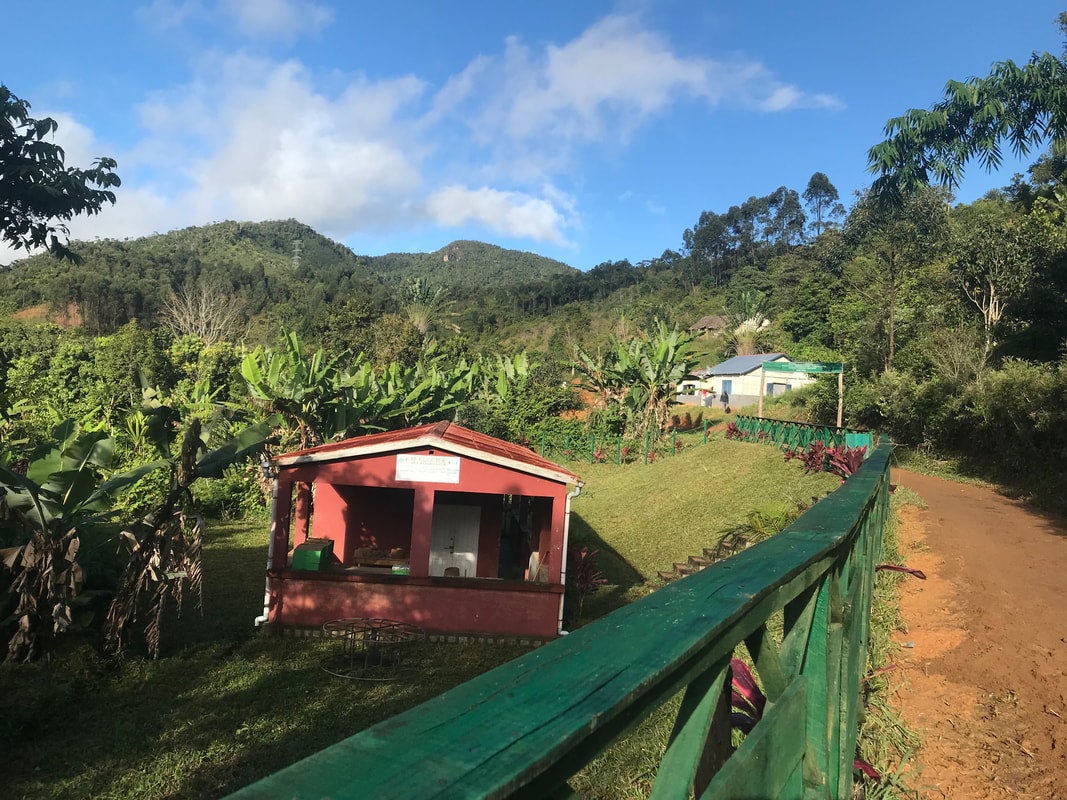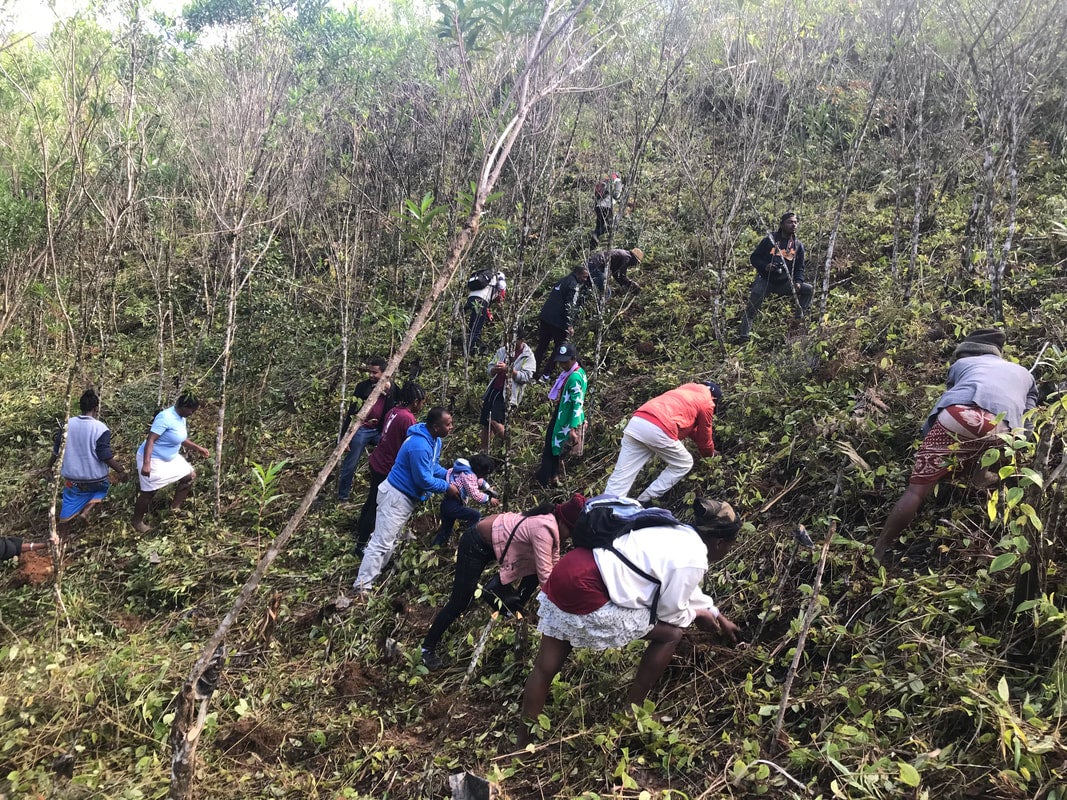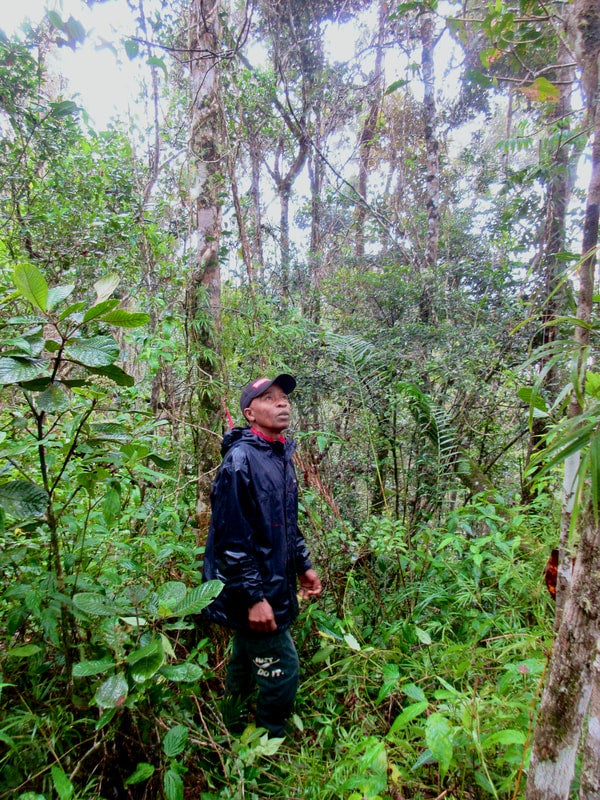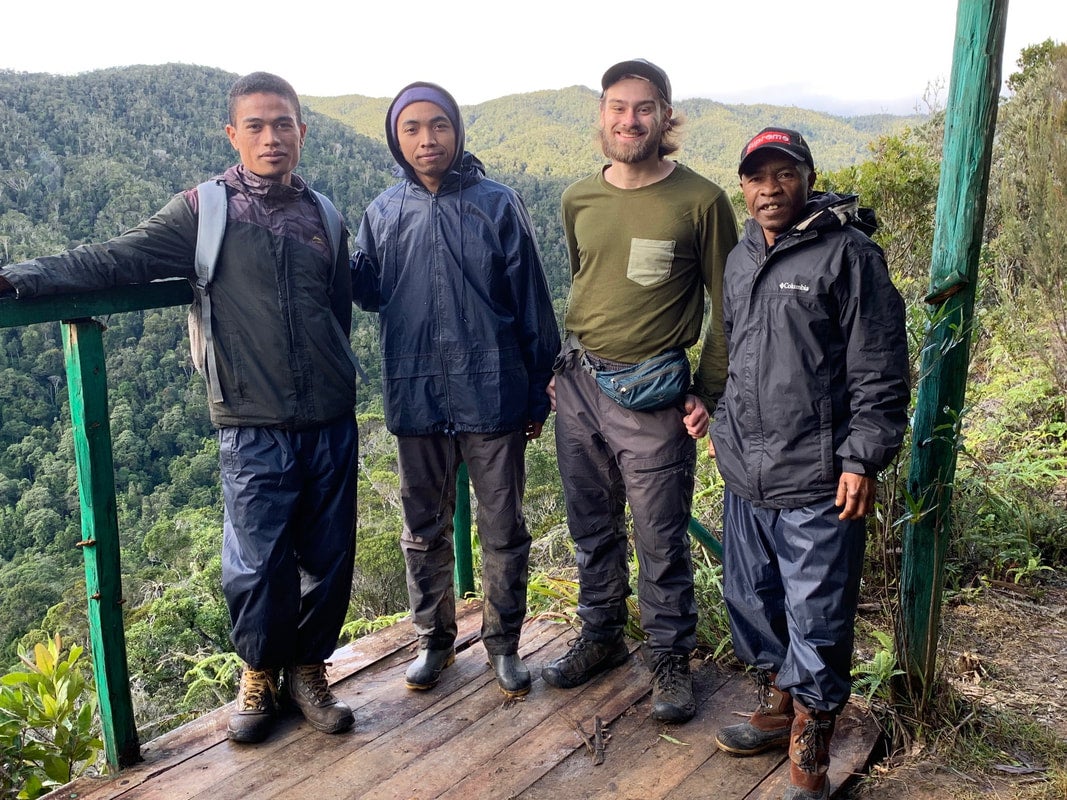Salama daholo (Hello everyone!)! Here in Maromizaha we are coming off of an especially rainy period and looking forward to some brief sunshine. I have two weeks remaining in Madagascar and my team and I are working hard to complete data collection for our projects. Day-to-day, we continue to collect samples from our seed traps, measure forest structure and plant variables, and survey transects across forest types for different lemur species. Our efforts feel like a culmination of the work I have done since I began graduate school to organize and plan this research.
Maromizaha lies near the southern end of a larger corridor of intact habitat in eastern Madagascar, including some of the last remaining mature tropical rainforest in this global biodiversity hotspot. With increasing threats of forest loss and fragmentation, remaining tracts in Madagascar have been the focus of ecological research and conservation efforts, often through the formation of national parks and other strict protected areas. Historically and continually, these efforts are largely driven by researchers, practitioners, and funders from wealthy countries in the Global North. This pattern is common across tropical regions rich in biodiversity and natural resources and perpetuates neocolonial power dynamics and relationships. Local communities that are most reliant on tropical ecosystems and who are most impacted by their management are routinely ignored or treated as minor stakeholders in issues of scientific research and biodiversity conservation. Malagasy conservation leaders have advocated for concrete changes to these dynamics, including support for local sustainable livelihoods and empowering community resource management through capacity-building.

When considering where I wanted to establish collaborations and conduct research for my graduate degree, I wanted to identify and act on opportunities to partner with local researchers and communities. I was excited to connect with stakeholders at Maromizaha, which is managed differently than many other protected areas in Madagascar. For one, the research, conservation, tourism, and resource use at this site is managed by Malagasy people. Maromizaha has several co-managing partners. GERP is a research and conservation organization in the country that works in several areas throughout Madagascar. Additionally, portions of the forest are managed by natural resources councils made up of local community members. Parts of the site where I have conducted my work are managed by VOI Maromizaha and VOI Fanantenana. All of these organizations work to not only protect areas of existing old-growth rainforest but to also establish areas of ecological restoration and build sustainable livelihoods for community members living in and around Maromizaha. During my own work at Maromizaha over the past months, I have been incredibly fortunate to work every day with folks from these groups as well as other excellent scientists and conservationists from Madagascar and the United States. At GERP, I have received incredible support from Dr. Jonah Ratsimbazafy, president of the organization and a world-renowned researcher and advocate for the environments and people of Madagascar. Jonah has been generous with his time and efforts to connect me with collaborators and the local GERP team at Maromizaha and will serve on my Rice doctoral committee as an external member. On the ground at the site, I have had the pleasure of collaborating with an excellent team including Andry, Randria, Rova, Mammy, and Sissi that have been crucial in organizing logistical support and connecting me with the many community members who have assisted my work. My research would not be possible without these committed individuals.
The leaders and members of VOI Maromizaha and VOI Fanantenana have also been very welcoming and collaborative during my time here. With the help of the GERP team, I met with leaders from these community groups prior to beginning my research and explained my interests and proposed activities. I appreciate their openness to my work and invitations to conduct research on their land. I look forward to meeting with community leaders next week to present the data collection and preliminary results. I will also use this meeting as an opportunity to propose future work at this site and solicit feedback on how I can align my research and engagement with community priorities.

While I have been at Maromizaha, I have spent most of my time with camping and working in the forest with my field team. Among the members have been local cooks and camp guards who have joined the crew for two weeks at a time. Their work has been crucial to living safely and comfortably in the forest through their maintenance of camp, preparing and managing meals, keeping warm fires at night, and making trips to recharge electronics in town. I have also received crucial assistance from many local porters who have helped transport food and equipment to and from the forest camp over the course of my time here.

The rest of my field team has remained with me for the nearly every day for the months that I have spent here and become close friends. My two guides, Tojo and Railson, have been invaluable research assistants who have kept me safe in during research activities and provided insight into the workings of the forest based on their extensive experience living and working here. They enthusiastically support my work and collect data with me as a cohesive team along with the final member of our group, Lova. Studying for his Master’s degree in Botany at the Univeristé d’Antananarivo, Lova joined the expedition as my local partner with an interest in studying the community of rainforest plants that provide food for the lemurs of Maromizaha. Lova and I have worked closely together to find alignment between our interests and assist on one another’s projects to integrate them but support his independence in pursuing graduate research. The four of us have spent many hours collecting seeds, searching for lemurs, and recording data as well as playing cards and sharing music in camp. My collaborations with my team have been a highlight of my field season at Maromizaha and I am so grateful to them for their effort and comradery. I look forward to working with them again during future research trips.

Over the past few weeks, I have also had the great opportunity to work with new additions to the field team. My advisor, Dr. Amy Dunham, and two recent bachelor’s graduates from Rice University, Amy Kuriakose and Michael Calhoun, arrived in early July to assist with my projects and explore the feasibility of new projects sampling pollinating insects across the forest types at Maromizaha. It has been lovely to share with them the work I have done and the many great local collaborators at this site. Additionally, Jaona Ranaivo, a representative from the environmental ministry of the Malagasy government, joined us to evaluate our work and provide his expertise in pollination. His perspectives and support for our work were a welcome addition to our team and greatly appreciated.

My first foray into field research as a graduate student has only been possible because of the incredible partners I have worked with throughout this process. I am continuously learning how to be strong collaborator who can bolster the incredible work that Malagasy scientists and communities do to create resilient and sustainable ecosystems. I hope I can continue to improve and foster the relationships I have begun building during my time at Maromizaha as well as grow new ones during my graduate career and beyond. I am looking forward to traveling home soon to see my family, partner, and friends, but I'm eager to return to Madagascar and the people I have met here soon.

All of Eric's research blogs can be found here: https://ericwuesthoff.weebly.com/blog

